Iran-Iraq war. Ch 2
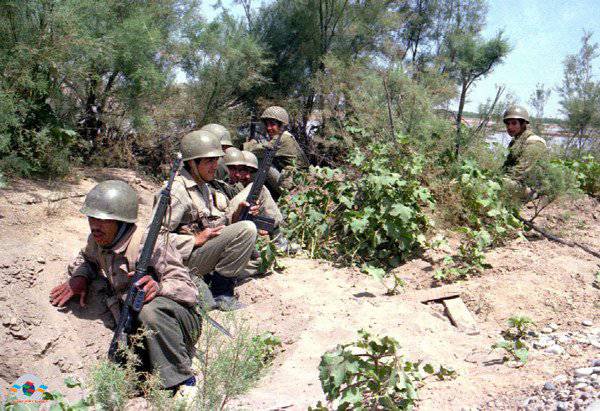
By the beginning of the war, Baghdad in the border zone with the Islamic Republic concentrated about 140 thousand people, 1,3 thousand tanks (mainly Soviet T-55, T-62 and T-72), 1,7 thousand guns and mortars, 350 combat aircraft (including reserves - 190 thousand people, 2,2 thousand tanks and 450 aircraft). On the Iranian side, they were opposed by a group of forces consisting of about 70 thousand people, which was armed with 620 tanks (mainly of American and British production, for example, the Chieftain), 710 guns and mortars, 150 combat aircraft. As a result, at the initial stage of the war, the Iraqi Armed Forces had a 2-fold superiority in personnel and tanks, 2,3 in combat aircraft, and 2,4 in artillery and mortars. In addition, one must take into account the fact that Iran had limited opportunities to replenish military equipment, ammunition and spare parts. Relations with the main arms supplier, the West, were damaged.
The Iraqi high command planned to defeat the Iranians in a short-term campaign and offer peace. They were going to strike the main blow on the southern sector of the front - in Khuzestan. The loss of the main oil-producing province was supposed to cause destabilization of the Iranian economy. No major operations were planned in the north and in the center; the main task of the Iraqi troops in these areas was to ensure the security of the Iraqi border territories from possible Iranian retaliatory strikes. That is why, a week after the start of the invasion, Saddam Hussein stopped the advance of his forces and expressed Baghdad's readiness to start peace negotiations. In general, Baghdad wanted to end the war by October 22.
The beginning of the war: the strike of the Iraqi armed forces
The war began with heavy strikes by the Iraqi Air Force against Iran’s military-economic and administrative centers. They also beat at its ports, the naval and aviation bases. On September 22, Iraqi MiG-23S and MiG-21S attacked Iranian air bases in Mehrabad and Doshen-Teppen near the capital, as well as the cities of Tabriz, Bakhtaran, Ahvaz, Dizful, Hamadan, Urmia, Abadan and Sanandaj. The Iraqi Air Force was able to partially destroy the take-off sites of Iranian airfields, destroy part of the fuel reserves, but in general, Iranian aviation did not suffer serious losses. Iranian warplanes, mostly F-4s, F-5s and F-14s, were assigned to reserve sites in advance. I must say that at the beginning of the war, while there were enough spare parts and ammunition (they were Western-made, and relations with the West were sharply damaged after the Islamic revolution), the Iranian Air Force acted quite effectively. So, in the first days of the war, Iranian aircraft attacked the capital of Iraq, at the Al-Walid air base, where the Iraqi Il-28 and T-22 bombers were based.
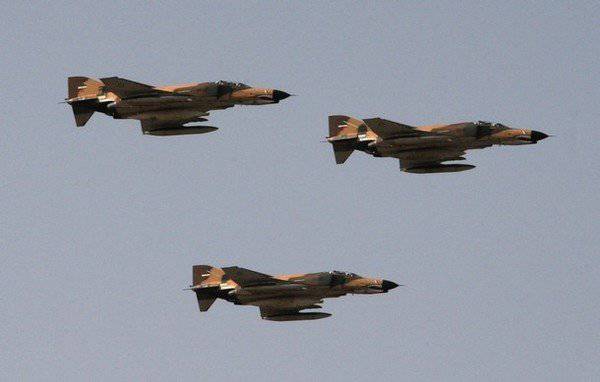
The offensive of the Iraqi troops was carried out on a front of up to 700 kilometers: from Kasre-Shirin in the north to Khorramshahr in the south. Six army corps of the Iraqi Armed Forces invaded the Islamic Republic of Iran in three directions. By the end of the first day of the “Iraqi blitzkrieg”, the troops managed to wedge into enemy territory up to 20 km and occupy 1 thousand square meters. km of Iranian territory. To the north, an Iraqi mechanized mountain infantry division defeated the border garrison at Qasr-Shirin and advanced up to 30 km eastward to the foothills of the Zagros, threatening the Baghdad-Tehran highway. In the central direction, Iraqi forces occupied the city of Mehran. Then the central Iraqi grouping moved east to the foothills of the Zagros, but was stopped by Iranian helicopter strikes. The Iraqi command dealt the main blow in the south with the forces of 5 tank and mechanized divisions, they advanced in two directions. The first group crossed the Shatt-al-Arab near Basra and went to Khorramshahr. The second grouping attacked Susengerd and further on Ahvaz, which were the basis of the Iranian defense in Khuzestan.
During the 10 days of the war, the Iranian army was thrown back 40 km from the border. The Iraqis captured a number of border cities, such as Bostan, Mehran, Dehloran, etc. Already at the beginning of the campaign, the Iraqi command made a number of serious miscalculations: they sent armored units to capture large cities instead of sending them to develop a breakthrough, which led to heavy losses in tanks. In addition, the interaction between the ground forces, the Air Force and the Navy was poorly established in the Iraqi Armed Forces. The Iraqi army was not ready for the stubborn, fanatical resistance of the Iranians. In almost all sectors of the front, there was fierce opposition from Iranian forces. Particular persistence was shown not even by regular units of the Iranian Armed Forces, but by detachments of the emerging Islamic Revolutionary Guard Corps (IRGC) and the people's militia ("Basij"). By the beginning of the war, there were up to 100 thousand people in the ranks of the Guardians of the Islamic Revolution and the militia. By the end of November 1980, Tehran sent 200 thousand people to the front.
In mid-October 1980, Iraqi troops continue their offensive against Khorramshahr and Abadan. The Iraqi units advancing on Ahvaz advanced 80 km and subjected the city to heavy artillery fire. Only with the help of strong air strikes by the Iranian Air Force (many pilots loyal to the Shah were amnestied after the start of the war) saved Ahvaz from capture and halted the Iraqi offensive.
3 November 1980, Iraqi mechs reached Abadan, but their strike was stopped by the IRGC troops. Abadan was blocked from three sides, several quarters were captured, but the Iranians threw reinforcements across the water and were able to hold the city. 10 November 1980 after violent street fighting, Iraqi forces were able to take Khorramshahr.
Iran began to respond to the offensive of the Iraqi troops with special operations. In Kurdistan, a blow was struck on the Iraqi oil pipeline (Syria, which supported Iran, closed its ports to Iraqi oil). On November 7, Iranian special forces, with the support of the Air Force and Navy, attacked oil terminals in Mine Al-Bakr and on the Faw Peninsula.
By the end of November 1980, the Iraqi blitzkrieg finally fizzled out. Iraqi troops were able to occupy only a third of the territory of Khuzestan, advancing 80-120 km into the depths of Iranian territory (Iraq captured a total of about 20 thousand square kilometers of Iranian territory). The Iraqi Armed Forces captured the cities of Kasre-Shirin, Neftshah, Mehran, Bostan and Khorramshahr, surrounded Abadan, but their offensive was stopped in front of the large cities of Kermanshah, Dezful and Ahvaz.
Saddam Hussein’s hope for the uprising of hundreds of thousands of Arabs did not materialize. The Iranian government did not go to peace talks. The advancing troops failed to complete all the tasks and began to prepare for defense. Quick victory did not work. In December, the war finally took a protracted nature.
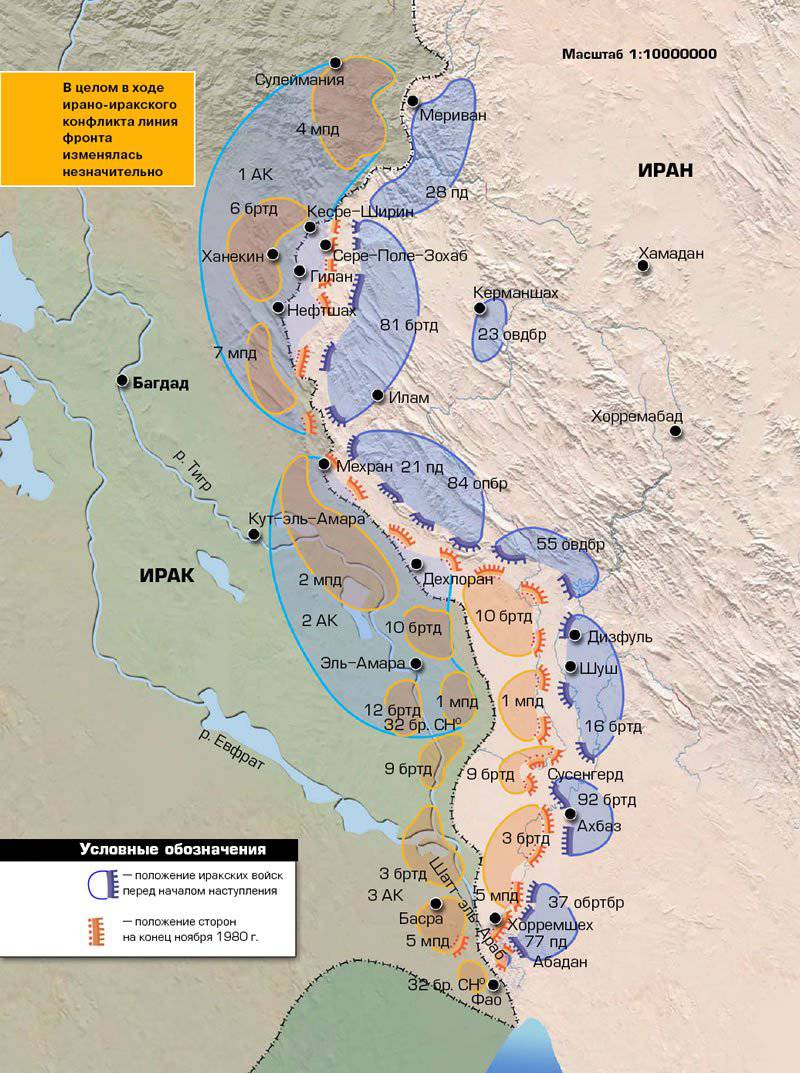
The main reasons for the failure of the Iraqi blitzkrieg
- Reassessment of the state of their armed forces, their combat capability, underestimation of the capabilities of the Iranian army and auxiliary military formations.
- Baghdad's underestimation of the stability of the new ruling regime in Iran. The Iraqis believed that the invasion of their troops would find the support of a part of the Iranian society, dissatisfied with the Islamic revolution and the Arab population. The loss of Khuzestan was supposed to cause destabilization in Iran. The Shiite leadership of Iran, according to the plans of the Iraqis, should have asked for peace itself.
- Lack of initiative and mistakes of the command of the Iraqi Armed Forces. The Iraqi command threw tank, mechanized units to storm the cities instead of building on the initial success. The loss of time and speed of the operation led to the fact that the Iranian command was able to mobilize and transfer reinforcements to the front, which equalized the forces of the parties. The command was unable to organize the full-fledged interaction of the ground forces, air force and navy. The Iraqi troops were not ready for the fierce resistance of the Iranians.
On the way to a turning point in the war
The Iraqi leadership decided that by holding the Iranian territories occupied by the troops, it would be possible to get Tehran to return all the disputed areas. In addition, demands were made to stop subversive activities in Iraq, support opposition, separatist movements and abandon the policy of exporting the Islamic revolution to the countries of the Arab world. Back in early October 1980, Baghdad announced that it had achieved its goals, the legitimate territories had been returned, and offered to settle the war through peaceful negotiations. But Tehran did not agree to this proposal.
The Iranian clergy used the beginning of the war to their maximum benefit. The war made it possible to solve a number of important tasks of consolidating power and consolidating society. There was an opportunity to officially start exporting the revolution to a neighboring country. Almost all divisions and units of the former Shah's army were sent to the front, thus, the ruling clergy bled a significant part of the opposition. The war made it possible to introduce an emergency regime and defeat the left-wing democratic movements, which played a huge role in the overthrow of the monarchical regime. At the same time, it was possible to sharply strengthen new military punitive structures loyal to the clergy, such as the IRGC. Religious and patriotic indoctrination of the population led to the fact that the vast majority of society was united against a common enemy, the dissatisfied were forced to remain silent. Thus, the war with Iraq became almost a godsend for the new ruling regime.
The Iranian military-political leadership decided that the transition of the Iraqi Armed Forces to the defense indicates their weakness and developed a counteroffensive plan. In early January 1981, the troops went on the offensive, but it failed. In the main direction of attack, the 16th Panzer Division was supposed to release Abadan, but it fell into the “fire bag” and was completely defeated (the Iraqis said they had destroyed or captured 214 Iranian tanks out of 300, the Iranian side admitted the loss of only 88 vehicles). In the spring and summer, the Iranian command tried to conduct several separate offensive operations of a limited scale, but they did not bring a positive result to the Iranians. The main reasons for the failure of the Iranians at the front at this time can be explained by the lack of experience in the organization of combat control, the poor level of training of troops, the lack of equipment and ammunition, and technical specialists for servicing heavy weapons. The weapons left from the monarchy, and especially spare parts for it, were not enough for a protracted war.
The Iraqi military-political leadership, after the failure of the Iranian counter-offensive, was convinced that the defensive strategy was correct. There was a false impression in Baghdad that the Iranian army was unable to break through a well-prepared line of defense. Therefore, after the unsuccessful March offensive by Iraqi forces on Susengerd, the command did not take any active offensive actions until the end of the year. In Baghdad, they still believed that the ruling regime in Tehran would soon collapse due to the internal crisis, which the war had exacerbated. In principle, there were grounds for such an opinion, the failure of the Iranian counter-offensive in January led to an aggravation of the conflict in the Iranian leadership. In Iran, there was a conflict between the army and a new armed structure - the Islamic Revolutionary Guard Corps. The Shiite clergy suspected that there were strong pro-Shah sentiments in the officer corps of the army and tried to reduce the role of the army in the country. In June 1981, the Majlis impeached Iran's first democratically elected president, Abolhasan Banisadr, with the wording "for activities directed against the Islamic clergy." On the night of June 21-22, units of the Islamic Revolutionary Guard Corps blocked the house and residence of the president, and also arrested the editors-in-chief of the main newspapers. On the morning of June 22, Khomeini signed an order to release Banisadr from his duties as head of the Islamic Republic of Iran. Banisadr went into hiding for some time and then fled to Europe. In response, the Organization of the Mujahideen of the Iranian People (OMIN), opposing the strengthening of the role of the Shiite clergy, unleashed terror in the country. On August 30, the new President of Iran, Ali Rajai, and the head of the government, Javad Bahonar, were assassinated. The authorities responded with mass arrests of OMIN activists. In general, Baghdad's expectation of a sharp change in Iran's domestic policy did not materialize.
It should be noted that in the summer of 1981 Israel indirectly helped Iran. On June 7, 1981, the Israeli Air Force carried out Operation Babylon - a nuclear reactor purchased from France was destroyed. Iraq's nuclear program has once again been thwarted.
Iranian counteroffensive
The second half of 1981 and the first half of 1982 in the Iran-Iraq war were marked by the transition of the Islamic Republic to active offensive operations on almost the entire front. The Iranian command, as well as the Iraqi command before that, concentrated its main efforts on Khuzestan. Significantly inferior to the Iraqi Armed Forces in the quantity and quality of weapons, the Iranian troops sought to use their numerical advantage. They tried to launch attacks suddenly, at night, without preliminary artillery and aviation preparation.
In early September 1981, the Iranian command, using the superiority of its troops in numbers, was able to create the appearance of an attack on Basra, and dealt the main blow against the Iraqi forces, which ensured the blockade of Abadan from the east. During the battle for Abadan, which lasted September 26-29, the city was released. Then, after a pause, the Iranian troops again went on the offensive in the Susengerd area and took Bostan.
In December 1981 of the year and January of 1982 of the year, Iranian forces launched successful offensives in the Qasr Shirin area.
In March - May 1982, the Iranian command launched a new offensive. By May, the Iranians reached the line of the state border with Iraq. In March 1982, the Iranian army liberated Shush with a surprise night attack. Moreover, this attack was marked by the use of suicide bombers - in the first echelon of the attackers there were many young volunteer militias (including 14-16 years old). Volunteers broke through a corridor in minefields, then regular units entered the battle. In the same month, another offensive operation (“Indisputable Victory”) was carried out, during which 3 Iraqi divisions were defeated near Susengerd. The most large-scale operation during the spring offensive was Operation Sacred Temple in April-May 1982. Its main task was the liberation of Khorramshahr and access to the state border. Researchers believe that Iranian troops used a rather flexible tactic in this operation. The Iranians had Iraqi troops in front of them, still reeling from the shock of previous defeats, their ability to coordinate actions was weakened. The Iranian command took advantage of this. Small Iranian sabotage units cut communications, created the appearance of a blockade and encirclement of Iraqi units. Several Iraqi divisions were pinned down and disoriented. On May 24, 1982, a decisive assault on Khorramshahr was launched. The city was attacked from four directions - one of the assault groups crossed a water barrier on boats. Iranian Air Force helicopters also took part in the operation. The Iraqi command, despite the critical situation, was able to save most of the forces defending Khorramshahr by withdrawing them to Iraqi territory along the only crossing across the Shatt al-Arab River. But approximately 19-20 thousand Iraqi soldiers were captured. The Iranian command began to prepare for a war in Iraq.
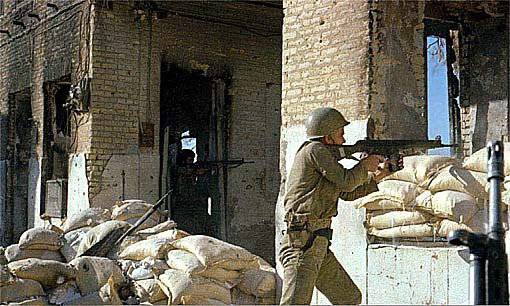
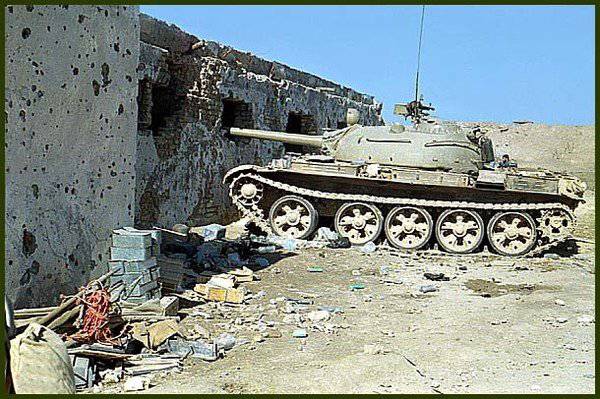
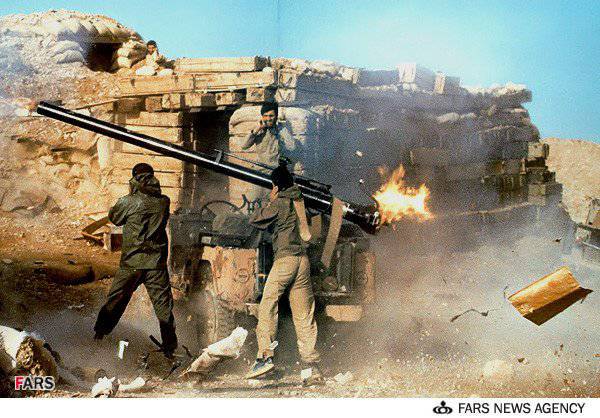
After these defeats, the Iraqi leader Saddam Hussein expressed his readiness to begin peace talks on the settlement of controversial issues and announced the withdrawal of troops from Iranian territory. The Iranian government has put forward completely unacceptable conditions of peace for Baghdad, including the resignation of Hussein himself.
After the fall of Khorramshahr, the military command of Iraq revised the tactics of using armored forces. Prior to that, they were used as the main strike force. Moreover, they made big mistakes, often used separately, without parts of reinforcement and support. After the transition to the defense, tanks began to be used in the second echelon of defense, they were located in trenches and shelters. The paths of their movement to spare or temporary firing positions began to be covered with sand embankments or went along specially dug ditches. Tanks were thrown into counterattacks only in case of emergency, for example, against enemy infantry that had broken through without heavy anti-tank weapons. Enemy tanks that had broken through were tried to be eliminated by fire on the flank and rear. The war took on a positional character, without deep breakthroughs. The Iraqi command finally withdraws troops to the border line, leaving only the disputed sections of the border in their hands.
During this period of hostilities, the Iranian command tried to achieve operational surprise. Several features can be noted in the actions of the Iranian armed forces. The limited use of the Air Force (in contrast to the first period of the war, when during the offensive of the Iraqi troops the Iranian Air Force was able to inflict a number of powerful strikes on the enemy), armored vehicles and large-caliber guns - mainly due to the lack of spare parts and ammunition. Almost completely no military operations were conducted at sea. The Iranians relied on the large number and psychological attitudes of the fighters (readiness for heavy losses). Troops widely used weapon melee - small arms, RPGs, mortars of small calibers, recoilless guns. Iranian troops suffered significant losses in manpower.
During this period, Tehran’s strategy was finally decided - Khomeini and his entourage strongly rejected any attempts to start negotiations to resolve the conflict. Not having enough heavy equipment, ammunition and equipment for a decisive strike on Iraq, the Iranian leadership is waging a war to exhaust the enemy.
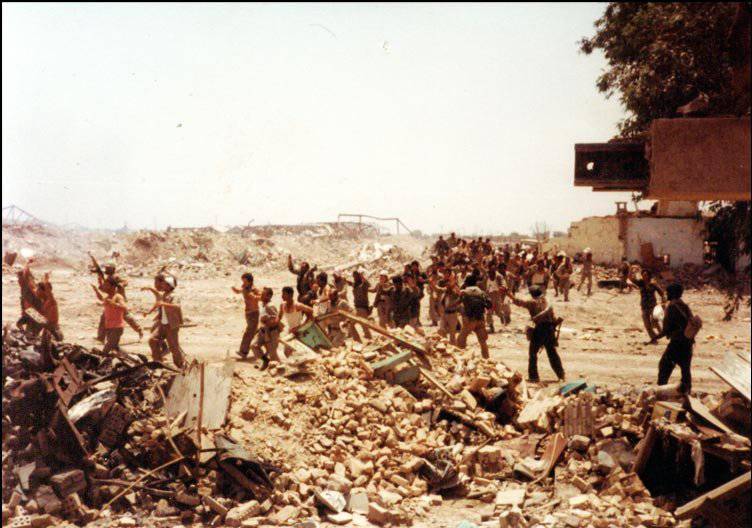
Information